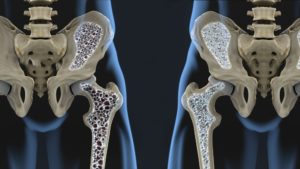A minute ago, you were walking down in the garden path and stop to pick up something and the next minute you are admitted in the hospital with a broken or damaged rib, or worse, a fractured hip. These sort of issues or conditions occurs due to Osteoporosis disease. It is a silent disease that strikes without any prior symptoms or warning. However, it’s fortunate that with the advancements in medical technology treating osteoporosis has become possible and it can virtually eliminated and helps in leading a happy & healthy life.
Facts about Osteoporosis
- Osteoporosis affects the strength as well as structure of bones and results in fractures more likely, in the hip, wrists and spine.
- Usually, it is seen among females after menopause stage, However, tobacco consumption and poor diet increases the risk of Osteoporosis.
- DEXA is an x -ray-based scan used to diagnosis Osteoporosis
- Often there are no clear external symptoms, but weakening of spine may result to a stoop, & there may be a bone pain.
What is osteoporosis?
Osteoporosis is a disorder considered by a decrease in the bone density, and its strength causing fragile bones. Osteoporosis factually leads to unusually spongy bone which weakens the bone & results in frequent bone fractures. Patients suffering from osteoporosis experience no symptoms till the bone fractures occur.
Causes and risk factors
The risk factors of osteoporosis has been classified into two types such as unavoidable factors and Avoidable factors:
Unavoidable factors
The unavoidable risks are non-modifiable risk factors such as:
Age: With the increasing age i.e. after the mid-30s, and particularly after menopause, the risk of osteoporosis develops.
Ethnicity: Asians and White people are more proneto osteoporosis
Reduced sex hormones: Low estrogen levels makes it harder for bone to reproduce.
Bone structure: Being too slim and tall increases the risk.
Genetic factors: Any close family member or relative having diagnosed of hip fracture or osteoporosis makes osteoporosis more possible.
Fracture history: Previously fractures, especially after 50 years, can results in osteoporosis.
Avoidable factors
The following are the Modifiable risk factors:
- Eating disorders, such as bulimia nervosa or anorexia, or orthorexia
- Tobacco use
- Excessive alcohol consumption
- Less intake of magnesium, calcium, & vitamin D
- Inactivity or Immobility
- Weight losing exercise prevent osteoporosis as it encourages bone growth.
Treatment of osteoporosis
Osteoporosis treatment aims in
- Preventing or reducing the development of osteoporosis
- Prevents fractures
- Maintains healthy bone mineral density as well as bone mass
- Reduces pain
- Improves the patient’s ability to continue with their daily life
For quick recovery, along with medical treatment given by best orthopedic few preventive lifestyle measures to be taken to make wonders. Thus, treatments for osteoporosis, along with osteoporosis medications, include avoiding the consumption of alcohol & tobacco, assuring suitable exercise and proper intake of vitamin D and calcium.
